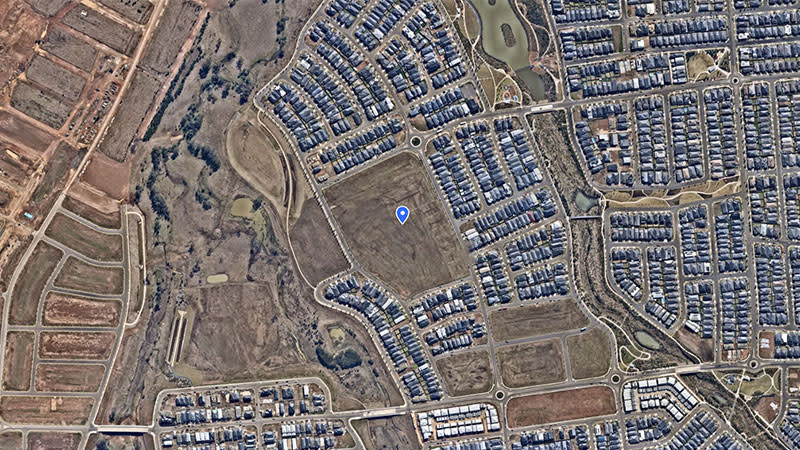
Plans for a seven-building education development have been lodged in Marsden Park, on Sydney’s expanding north-west fringe.
The state significant development, part of the Blacktown Council local government area, is planned for a 5.9ha island site between Kaluta Avenue, Elara Boulevard, Galah Street and Swallowtail Street in Melonba.
The site is zoned as a low-density residential zone and has been earmarked for an educational facility by Blacktown City Council for some time.
School Infrastructure NSW has now put forward the plans, designed by commercial architecture firm NBRS, for the new 2000-student Marsden Park High School and 1000-student Melonba Primary School.
The high school will take up 4ha of the site with the primary school taking the remaining two hectares.
Plans for the dual-school complex will include a series of three-storey buildings encircling expansive outdoor learning areas, as well as another single-storey building featuring a gym, hall, lecture theatre and canteen.
Each school will have its own dedicated sports oval and up to 30,000sq m of the site will be marked as open space.
If approved, the project is expected to create more than 400 construction jobs and more than 200 full-time jobs once complete and operational.

To the north, east and south of the vacant site is emerging and recently completed low-density residential development comprising one and two storey dwellings.
The next phase of residential development in the area is located on the western side of Little Creek and is in the bulk earthworks phase to create the street network.
School Infrastructure NSW said in its planning documents that the key drivers for the new schools were high residential growth and population demand and spatial misalignment between demand and capacity across the SCG.
The newly built suburb of Marsden Park has since become one of the child capitals of Sydney, with more children aged under nine—one in five residents—than almost any other suburb.
The city’s north-west fringe is currently a patchwork of bucolic countryside, leafy 1990s homes with big backyards and new housing of varying quality. In the new estates, houses tend to take up most of the blocks.
Infrastructure remains a hot topic in Sydney’s growth corridors, with a ballooning population in suburbs such as Marsden Park without the social infrastructure to match.
Northbourne Public School opened last year in Marsden Park to cater for the ballooning population. It is already over capacity, with 19 demountables.
So are North Kellyville, Jordan Springs with 14 demountables and Gledswood Hills, in the south-west, with 22 demountables public schools.
The lack of public high schools in the region has been a sore point with residents and locals.

There are plenty of private schools. The non-government sector spotted a need for schools in the area years ago, and acted upon it. The Catholic Education Diocese of Parramatta opened St Luke’s at Marsden Park in 2017 and has recently opened another in Box Hill.
In the south-west, Oran Park Anglican College opened in 2012, while Oran Park High opened in 2020.
School Infrastructure NSW chief Anthony Manning said the organisation had been working out ways to reduce the three-to-four-year gestation period for new schools.
“What we didn’t anticipate was the speed of the growth of [Oran Park] and the density of the occupants of that suburb,” Manning said.
“We are finding that some of these areas are moving much more quickly than anybody has ever anticipated.”
An extra 833,000 more people are expected to call Western Sydney home in the coming two decades.
Thousands of new homes are expected to be built in Oran Park, and neighbouring Catherine Fields and Leppington, over the next five years and new infrastructure, including schools, hospitals, public transport and key roads will be needed to support growth pains.